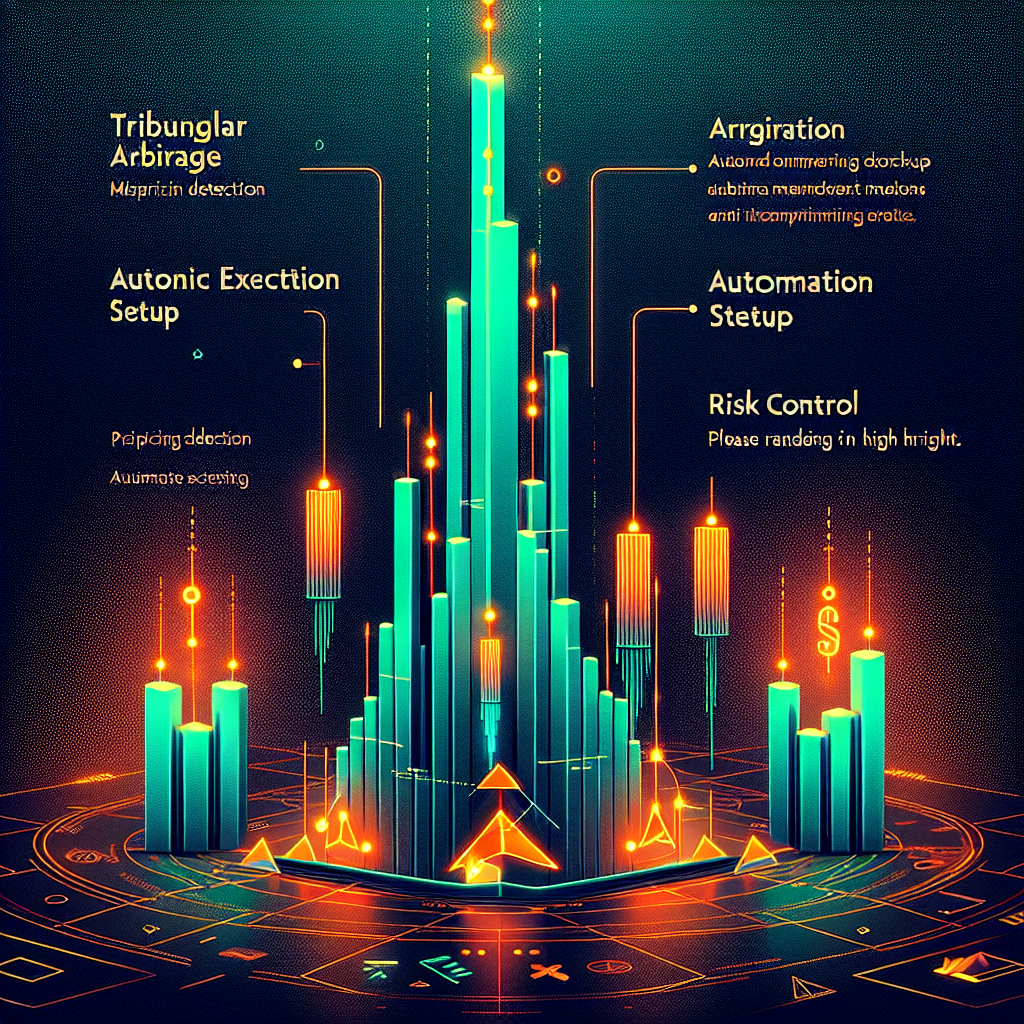Triangular Arbitrage in Cryptocurrency Markets: Step-by-Step Mispricing Detection, Automated Execution Setup, and Risk Control Techniques

Introduction to Triangular Arbitrage in Cryptocurrency Markets
Triangular arbitrage is a market-neutral trading strategy that exploits price discrepancies between three currency pairs on one or multiple cryptocurrency exchanges. For example, a trader might exchange Bitcoin (BTC) for Ethereum (ETH), ETH for Tether (USDT), and finally USDT back to BTC. If the product of the three exchange rates deviates from one, the loop ends with more BTC than it started with, locking in a virtually risk-free profit. In highly fragmented and volatile crypto markets, fleeting mispricings of a few basis points appear thousands of times per day, making triangular arbitrage an attractive quantitative opportunity.
Why Crypto Provides Fertile Ground for Mispricing
Traditional Forex markets are dominated by institutional liquidity providers and high-frequency trading firms, compressing spreads to near zero. By contrast, cryptocurrency venues differ in latency, liquidity, fee structures and order-book depth. A coin trading at $2,000 on Binance can be $2,010 on Kraken milliseconds later because participants cannot update quotes everywhere simultaneously. Stablecoins, regional fiat gateways and wrapped tokens add more layers of complexity, multiplying the number of potential triangles. The result is a rich landscape of short-lived inefficiencies that an agile arbitrage engine can systematically harvest.
Step-by-Step Guide to Detecting Mispricing
1. Collect Real-Time Order-Book Data
The foundation of triangular arbitrage is a low-latency data pipeline. Subscribe to WebSocket feeds that stream best bid/ask quotes for every trading pair you want to include. Store the data in an in-memory cache keyed by symbol so that it can be updated and queried in microseconds.
2. Normalize Prices into a Common Numeraire
Because exchanges quote pairs differently (e.g., ETH/BTC vs BTC/ETH), convert all tickers into direct rates using a single base currency, typically USD. This allows quick multiplication of legs without worrying about inverted pairs.
3. Generate All Triangular Paths
Create an adjacency graph where nodes are assets and edges are exchange rates. Depth-first search over three-step cycles that start and end with the same asset. Precompute the list to avoid expensive recursion during live trading.
4. Adjust for Trading Fees and Slippage
Gross mispricing must exceed the sum of taker or maker fees on each leg plus an extra buffer for slippage. Hard-code fee schedules per exchange and subtract them from the raw edge so only genuinely profitable loops surface.
5. Compute the Implied Cross Rate
For each eligible triangle, multiply the forward rates: R = RAB × RBC × RCA. If R > 1 + threshold, an arbitrage exists in the forward direction; if R < 1 − threshold, the reverse direction is profitable.
6. Validate Order-Book Depth
Check the available quantity at quoted prices to ensure you can complete the full loop without walking the book. Calculate the minimum of the depth across all three legs to cap the trade size.
7. Publish Opportunities to an Execution Engine
Once a viable triangle is identified, serialize the opportunity (symbols, side, size, expected profit) and push it to an execution queue where the trading bot will act instantly.
Building an Automated Execution Setup
Low-Latency Architecture
Speed is paramount. Co-locate cloud instances as close as possible to exchange servers, choose languages like C++ or Rust for critical paths, and employ kernel-bypass networking if the capital warrants it. A round-trip latency under 20 ms dramatically increases capture rates.
Atomic Order Submission
Because mispricings vanish in milliseconds, all three legs should be fired nearly simultaneously. Use non-blocking REST batch endpoints or, better, native exchange FIX or gRPC gateways that allow multi-order messages. Wrap the sends in an asynchronous task group so the slowest leg does not delay the others.
Handling Partial Fills
No matter how well engineered, one leg may fill only partially, leaving the loop unhedged. Implement an auto-completion routine that immediately submits offsetting orders or, if spreads permit, dumps the residual position in the spot market. Maintaining a real-time inventory ledger helps decide the cheapest exit.
Dynamic Sizing Algorithm
Link order size to both the forecasted edge and account risk limits. A simple rule is: Size = min(MaxSize, Depth × κ, Capital × λ), where κ and λ are tunable fractions. This prevents oversizing tiny edges and undersizing high-confidence ones.
Risk Control Techniques
Exchange-Specific Limits
Set API-level 24-hour notional caps and per-minute order count ceilings to avoid frantic bursts that could trigger anti-abuse systems. Regularly synchronize balances to detect stuck funds or API desynchronization.
Latency Arbitration and Jitter Buffers
Network jitter can reorder quote updates, producing phantom edges. Apply timestamp alignment and require two consecutive detections before firing orders. A median filter over the last five observations further suppresses outliers.
Portfolio Diversification
Hold a diversified inventory of quote currencies (BTC, ETH, USDT, BUSD, EUR) on each venue. This minimizes transfer delays and lets the engine choose the most profitable settlement asset in real time.
Cold-Storage and Hot-Wallet Segregation
Keep only operational float in hot wallets; sweep excess profits to cold multisig addresses daily. If the bot is compromised, potential losses are capped at the float.
Stress Testing and Shadow Mode
Before going live, replay historical tick data through the full stack. Verify profit curves net of fees remain positive during flash crashes and bull runs. Operate in shadow mode (signals without orders) for a week to capture false positives.
Regulatory and Tax Considerations
Many jurisdictions view rapid in-house crypto-to-crypto conversions as taxable events in the base fiat currency. Maintain meticulous execution logs, timestamped fills, and valuation records to simplify year-end reporting. Also monitor evolving exchange-specific compliance requirements such as Travel Rule reporting thresholds.
Conclusion
Triangular arbitrage offers algorithmic traders a repeatable edge by capitalizing on structural inefficiencies in fragmented cryptocurrency markets. Success hinges on three pillars: an ultra-fast detection algorithm, an atomic execution engine, and robust risk control. By following the step-by-step framework outlined above—collecting clean data, normalizing rates, filtering for fee-adjusted mispricings, deploying low-latency order submission, and enforcing tight operational safeguards—traders can transform fleeting discrepancies into consistent, market-neutral returns while keeping downside tightly bounded.